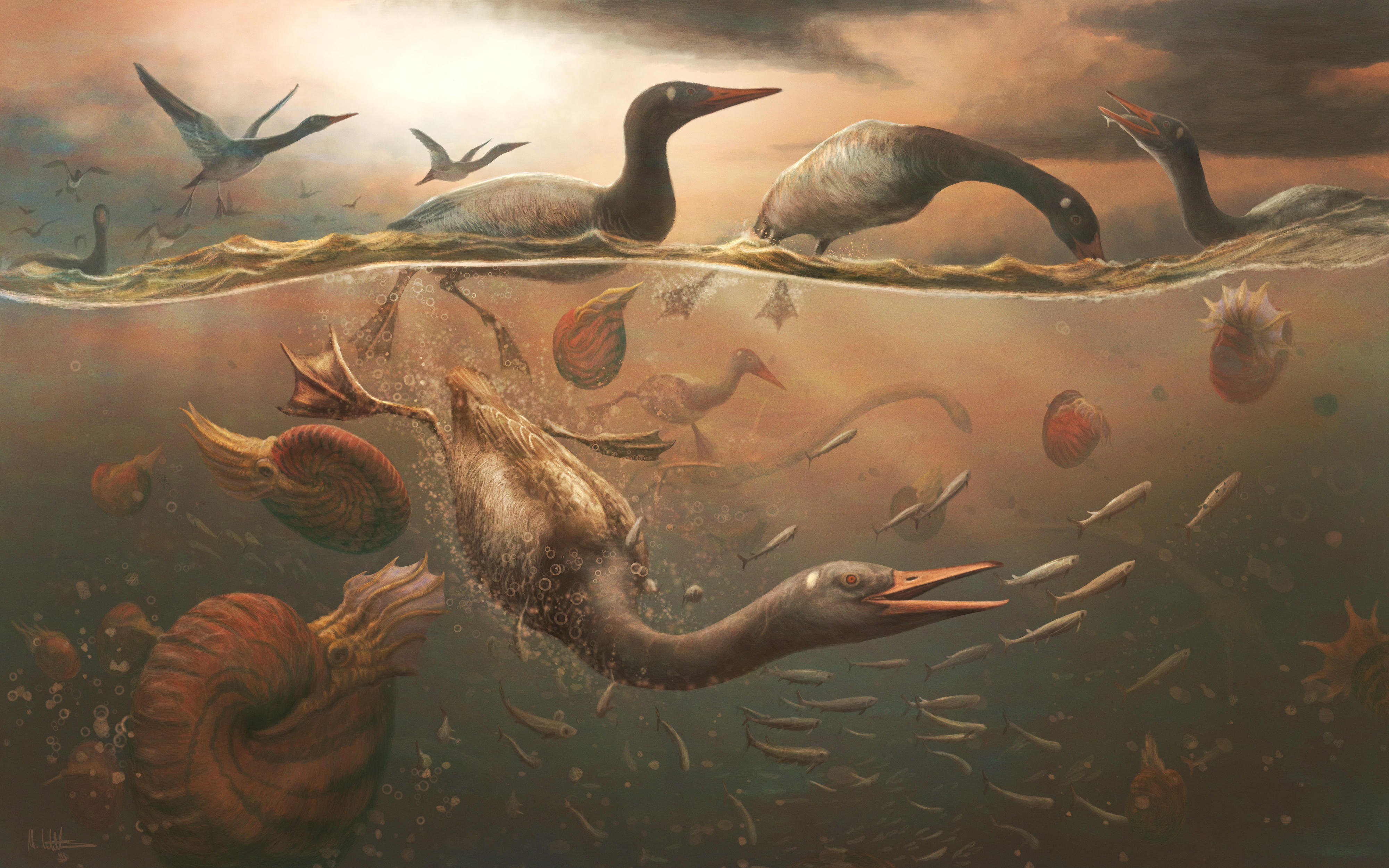Media release
From:
Palaeontology: Skull discovery completes ancient waterfowl puzzle
A new fossil of a bird that lived around 68 million years ago in Antarctica confirms its identity as an early waterfowl. The near-complete skull, described in Nature this week, belongs to a bird called Vegavis that has previously only been partially characterized. The findings may offer novel insights into avian evolution.
Previous specimens of Vegavis either consisted of skeletons without a skull or partial skull elements, such as a partial mandible, leaving much uncertainty regarding the bird’s classification within the avian family. The limited evidence had hinted towards it being a relative of modern waterfowl, but the lack of a complete skull meant that there was some uncertainty about the bird’s identity and its place on the avian evolutionary tree.
Christopher Torres and colleagues present a nearly complete skull of Vegavis iaai, one of the earliest known birds from the latest Cretaceous (around 69.2–68.4 million years ago) of Antarctica. The researchers generated a near-complete three-dimensional reconstruction of the new skull. The analyses reveal a typical avian brain shape and strongly support the placement of Vegavis within the waterfowl family and as a close relative of ducks and geese. However, the analysis also shows that Vegavis has a slender, pointed beak powered by enhanced jaw muscles, a feature that is less like other known waterfowls but more like diving birds.
The work helps to improve our understanding of early bird evolution during the Cretaceous, particularly given the scarcity of Cretaceous fossils recording of modern birds.



 Australia; International; QLD
Australia; International; QLD



